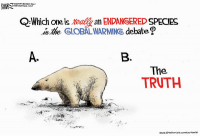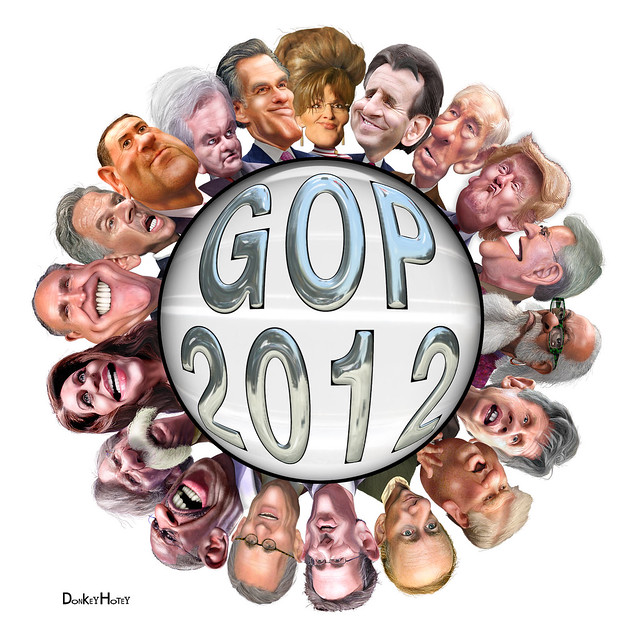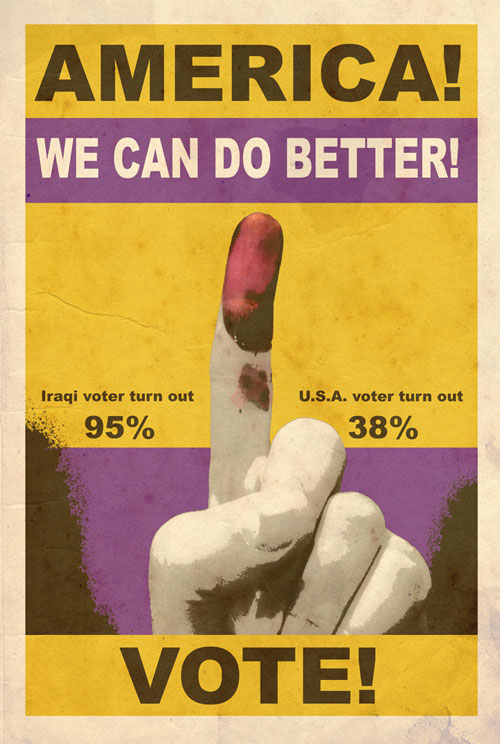But yes… even though the majority of Americans do not believe in or want Cap and Trade, just like with HC which will lose jobs and cost Americans money and jobs, the administration marches ahead… scams and untruths ignored. Today, with the support of the White House, Senators Kerry and Lieberman are introducing a new bill to regulate energy.
Cap-and-Trade: A Scam Based on a Scam
By Alan Caruba Tuesday, May 11, 2010 It is almost beyond comprehension that Sen. John Kerry (D-MA) and Sen. Joseph Lieberman (I-CT) will introduce the Cap-and-Trade Act on Wednesday, May 12th, for consideration by the Senate. It is being passed off as a “climate bill” with provisions for more oil drilling, but it is an assault on reality, on science, on common sense, and on any future economic growth of the nation.
It is almost beyond comprehension that Sen. John Kerry (D-MA) and Sen. Joseph Lieberman (I-CT) will introduce the Cap-and-Trade Act on Wednesday, May 12th, for consideration by the Senate. It is being passed off as a “climate bill” with provisions for more oil drilling, but it is an assault on reality, on science, on common sense, and on any future economic growth of the nation.
The nation’s prisons are filled with men still claiming to be innocent after trials filled with evidence of their guilt. Denial of the truth is their last resort and this metaphor reflects what is happening in the utterly corrupt community of “global warming” liars and their associates in the U.S. government.
Recently 225 “scientists” wrote a letter defending global warming. It was published in the journal “Science”, one of the many such publications that have become as corrupt as those at the center of the global warming scam.
Based on last November’s leaked emails among those most responsible for the data at the heart of the global warming scam, it was revealed that the United Nations Intergovernmental Panel on ClimateChange had been systematically publishing false climate information and analysis.
Moreover, the photo used to illustrate the “scientists” letter was photo-shopped to show a polar bear on a small piece of ice surrounded by water. The deception included the fact that many of the signatories to the letter lack credibility. Among the first 20 listed, none work in the field of climate science.
As reported by Tony Hake of Climate Change Examiner, “Pediatric surgeons, an expert in the Maya and Olmec civilizations, a chemist that studies bacteria, and a ‘computer pioneer’ with Microsoft, an electrical engineer, the chairman of a biotechnology firm, and even an expert studying corn are but a few of the 225 experts that signed the letter.”
Dr. Gerhard Kramm, an atmospheric scientist at the University of Alaska Fairbanks, fired off a letter disputing the usual claim that human activity is causing carbon dioxide emissions that are, in turn, causing global warming. “Until today, there is no scientific evidence that an increase of the globally averaged near-surface temperature by less than one Kelvin during the last 160 years can be linked to the increase of the atmospheric concentrations of so-called greenhouse gases.”
There is no global warming. Whatever warming occurred followed the end of a mini ice age that began around 1350. Around 1850 the Earth’s temperature increased about one degree Fahrenheit to its current level.
The United Nations has been the locus of the greatest hoax perpetrated in the modern era
The United Nations has been the locus of the greatest hoax perpetrated in the modern era, codified in the bogus Kyoto Protocol, an international agreement that many nations signed onto in1997. The Clinton administration signed the agreement, but did not implement it due to a Senate resolution that unanimously rejected it.
The real aim of the global warming scam is the prospect of selling “carbon credits” in exchanges around the world, in effect selling air!
Cap-and-Trade Act: Constitute the greatest tax on energy use in the history of the nation
If the Cap-and-Trade Act is passed at the urging of the Obama administration, it will constitute the greatest tax on energy use in the history of the nation and it will energize exchanges, such as the one in Chicago, set up to buy and sell the carbon credits.
As reported by Investor’s Business Daily on May 7, “The carbon trading system being pushed here has spawned crime and fraud across the pond. Cap-and-Trade is not about saving the planet. It’s about money and power, and absolute power corrupting absolutely.”
The European Emissions Trading System is a warning to America. IBD described it as “a scam built upon a scam.” British and German law enforcement authorities have been busy arresting miscreants “as part of a pan-European crackdown on carbon credit VAT tax fraud.” And VAT, a valued added tax, is being advanced in the United States as a way to raise money to pay off our ever increasing debt.
“Last December,” reported IBD, “Europol, the European criminal intelligence agency, announced that Emissions Trade System fraud had resulted in about five billion euros in lost revenues as Europe’s carbon traders schemed to avoid paying Europe’s VAT and pocket the difference. In announcing the raid, the agency said that as much as 90% of Europe’s carbon trades were the result of fraudulent activity.”
The entire global warming theory has been a scam, a hoax and a fraud from the day it was first put forth. Its advocates, corrupt scientists, corrupted science journals, and all of the environmental organizations are hoping the same Congress that foisted Obamacare on Americans will do the same with Cap-and-Trade.
© Alan Caruba, 2010
Myths of Cap-and-Trade and Clean Energy Policies
By Institute for Energy Research Tuesday, May 11, 2010 Tomorrow, with the support of the White House, Senators Kerry and Lieberman are introducing a bill to regulate energy. The Obama administration and Congress are trying to make the American public believe that cap-and-trade and other “clean energy” policies will reduce greenhouse gas emissions while not significantly increasing consumer prices. These Senators and the President point to Europe as providing a model the U.S. should follow.
Tomorrow, with the support of the White House, Senators Kerry and Lieberman are introducing a bill to regulate energy. The Obama administration and Congress are trying to make the American public believe that cap-and-trade and other “clean energy” policies will reduce greenhouse gas emissions while not significantly increasing consumer prices. These Senators and the President point to Europe as providing a model the U.S. should follow.
The problem is that the European community has already tried such approaches, and the results have been poor. Clean energy policies in the generating sector have increased electricity prices, indeed often doubling them. Cap-and-trade policies have enriched the companies that were granted free allowances by giving them a commodity to sell that they paid nothing to obtain. European carbon-dioxide emissions were rising, until the global recession lowered them—lowered them, in many cases, below targets set by cap-and-trade, so that companies did not have to take further actions to reduce emissions. And, as studies have shown, European clean-energy policies have resulted in job losses, often in economies already hurting.
Why, with results like these, are U.S. politicians still trying to persuade companies to accept such policies, and handing out free incentives to entice them?
The European Experience with Cap-and-Trade
The European Union started a cap-and-trade scheme in January 2005 in an attempt to comply with the 1997 Kyoto Protocol. Most Western European nations participating in the cap-and-trade program found the program to be expensive, as well as inefficacious in reducing carbon dioxide emissions, actually resulting in increased rather than decreased emissions until the global recession hit.[a] According to European Commission figures, emissions from the 27 member states rose by 1.9 percent in the first three years after cap-and-trade was put into effect.[ii] Several countries were seeing a faster growth in carbon-dioxide emissions than the United States, which did not adopt the policy. From 2000 to 2006, European emissions rates under the cap-and-trade policy increased by 3.5 percent. During that same time, U.S. emissions increased by 0.7 percent.[iii] To the extent European nations have reduced emissions below business-as-usual levels, their economies have been hurt with higher unemployment and energy costs than the United States.[iv]
Further, the Europeans found misuses and abuses in the system, because all parties have an incentive to manipulate it. Many companies got free permits, and because those permits were based on future estimates of emissions levels, there were too many free permits. As a result, companies made large profits by selling unneeded permits and not passing their savings on to their customers. As a result, consumers were paying higher energy and commodity costs, and taxpayers paid for the program’s implementation, which created a new middleman to run the carbon-permit trading program.[v]
Europe found the costs of the program to be large. In 2006, individual businesses and sectors had to pay €24.9 billion ($31.6 billion) for permits totaling over one billion tons. The WorldWatch Institute estimates the costs of running a trading system designed to meet the European Union’s Kyoto obligations at about $5 billion. The costs of a trading system designed to meet the European Union’s commitments of a 20 percent reduction by 2020 (against a 1990 baseline) are estimated to be about $80 billion annually.[vi]
Recently, tax evasion has been added to the list of ills stemming from carbon trading. German prosecutors searched 230 offices and homes of employees of Deutsche Bank, Germany’s largest bank, and of RWE, Germany’s second-biggest utility, to investigate tax evasion of 180 million euros ($238 million U.S.) linked to emissions trading. Last year, the U.K., France, and the Netherlands started investigating carbon traders who committed fraud by collecting the tax and then disappearing without turning the tax funds in. According to estimates from Bloomberg New Energy Finance, about 400 million metric tons of emission trades may have been fraudulent last year, or about 7 percent of the total market.[vii]
Another issue has been the lack of predictability regarding the emissions permit price. Companies need a relatively stable price for long-term planning, but the European Union saw the permit price range by a factor of 3—and even at the higher price range, it was insufficient to meet emission targets; before the global recession.[viii]
Clean Energy Policies in Europe
Besides cap-and-trade, European countries have been aggressively promoting renewable energy. Several countries in Europe have instituted renewable energy standards that require a certain percentage of electricity come from renewable energy, and that also provide subsidies in an effort to help achieve these targets. The outcome has been higher electricity rates, job losses, and high tax-payer supported subsidies.
Spain. Spain’s requires that 20 percent of its electricity production be from renewable energy by 2010. The government’s Renewable Energy Plan expects to have 20,155 megawatts of wind capacity by then. In 2008, wind energy provided 10.2 percent of the country’s electric consumption at a price per kilowatt hour that was almost 50 percent higher than wind’s generating price 10 years prior, partly owing to high premiums in the regulated rates for renewable energy and the requirement that all renewable energy be purchased by electricity retailers. Spain provided both regulated rates and direct incentives to attract investment and meet its renewable policy goals.
This these regulations come at a high cost. A Spanish study found that Spain’s “green jobs” agenda resulted in job losses elsewhere in the country’s economy. For each “green” megawatt installed, 5.28 jobs on average were lost in the Spanish economy as an opportunity cost; for each megawatt of wind energy installed, 4.27 jobs were lost; and for each megawatt of solar installed, 12.7 jobs were lost. Although solar energy may appear to employ many workers in the plant’s construction, in reality it consumes a great amount of capital that would have created many more jobs in other parts of the economy. The study also found that 9 out of 10 jobs in the renewable industry were temporary.[ix] Based on Spain’s experience, the United States can expect to lose 2.2 jobs for every “green” job created, and each of those “green” jobs will cost about $803,000 in government subsidies.[x]
Last year, the Spanish Government decided to slash subsidies to solar power, subsidizing just 500 megawatts of new solar projects, down sharply from 2,400 megawatts.[xi] More recently, Spain—worried that it may end up in a similar debt crisis as Greece, owing to a cut in its credit rating by Standard and Poor’s—has decided to curb subsidies to renewable plants already generating, in order to reduce energy costs that are largely passed on to the consumer. Solar energy producers are getting about 12 times what fossil fuel plants earn.[xii]
Britain. Britain has a target of meeting 15 percent of its electricity demand in 2020 with renewable sources. The government’s clean-energy advisers have warned that Britain could spend £100 billion over the next decade and still not hit the target. The credit crunch slowed the already slow rate of renewable deployment to a crawl. With financing and credit harder to come by, expensive offshore wind farms look less attractive to the big utilities.[xiii] Although the U.K. has built, with enormous subsidization, enough wind turbines to generate 5 percent of its electricity, no more than 1 percent is operational when needed since wind does not operate during periods of intense heat or cold.[xiv]In 2008, the U.K. had 3.24 gigawatts of wind capacity, 2.7 percent of the world total, and ranked 8th in the world.[xv]
Germany. In 1991, Germany established the Electricity Feed-in Law, which established feed-in tariffs to subsidize renewable energy, and in 2000, it passed legislation that guaranteed continued support for 20 years. Feed-in tariffs require electric utility companies to purchase power from independent renewable energy producers at technology-specific rates that are far above their production costs. For example, solar photovoltaics, the most expensive renewable, has a feed-in tariff of 43 euro cents per kilowatt-hour ($0.59 U.S. per kilowatt-hour), over 8 times the wholesale price of electricity and over four times the feed-in tariff for onshore wind power. By 2008, Germany was second to the United States in installed wind power, and first in installed solar power. But wind power in Germany was still 300 percent more costly than conventional electricity, on a per kilowatt-hour basis.
Financial aid to Germany’s solar industry reached a level that far exceeded average wages, with per worker subsidies as high as $240,000 U.S. In addition, Germany has learned—as the U.S. is beginning to learn—that green jobs created by government actions disappear as soon as government support is terminated.[xvi] Germany is reducing its subsidies for solar to ease costs for electricity consumers. Surprisingly, Germany’s photovoltaic manufacturing industry is supporting slashing subsidies, owing to competition from Chinese manufacturers, whose production costs are 30 percent lower. China is now the world’s largest producer of solar cells.[xvii]
Denmark. The Obama Administration often touts the fact that 20 percent of Denmark’s generation comes from wind. While Denmark does generate 19 percent of its electricity from wind, a far smaller amount goes toward meeting the country’s electricity demand. In 2006, for example, only 5 percent of Denmark’s electricity demand was filled by wind, and over the last 5 years, it has averaged 9.7 percent.[xviii]
The reason is that wind is an intermittent technology, with the best winds occurring at night when electricity load is low. Since wind energy can’t be stored, Denmark exports its wind power to Norway, Sweden, and Germany. West Denmark exports, on average, 57 percent of its wind power, and East Denmark exports 45 percent. Norway, whose generation is 99 percent hydroelectric power, is able to use that energy source as a large battery for Denmark’s wind power. Denmark’s taxpayers have, in essence, subsidized power for its neighbors, who are buying the wind power at inexpensive electricity rates. Between 1999 and 2006, Denmark found its energy technology sector had under performed by 13 percent, compared to the industrial average, meaning that government subsidies paid for employment to shift from more productive sectors to the less productive energy-technology sector.[xix]
Conclusion
The European experiences with cap-and-trade and the promoting of renewables shows us that these schemes are expensive and do not achieve the desired results. But the President and Senators Kerry and Graham continue to promote these ideas nevertheless.
Even the Washington Post has noted the problem with cap-and-trade:
“Cap-and-trade regimes have advantages, notably the ability to set a limit on emissions and to integrate with other countries. But they are complex and vulnerable to lobbying and special pleading, and they do not guarantee success.” [xx]
The European Union has found this to be the case: their cap-and-trade program did not meet its targets, made many companies wealthier, and resulted in higher energy prices for consumers.
The Tax Foundation and others have found cap-and-trade bills to be regressive, with bottom income earners paying a higher percentage of their income toward the implied tax than top income earners.[xxi] The cost to the average American family would vary based on the actual cap-and-trade program instituted. And even then, the estimates vary. For example, the Tax Foundation estimated the average household would spend an extra $1,218 a year; yet, for the same cap-and-trade policy, the Congressional Budget Office estimated the average American family would spend an extra $1,600 per year. [xxii]
The fact that the carbon-trading market in Europe is drawing suspicions of tax evasion should also be a bad sign for cap-and-trade proponents, because that market is so young and still small. It just points to further areas of potential fraud beyond the companies making a fortune off of free emission permits because of Europe’s hastily and poorly constructed cap-and-trade program. But can such a policy as cap-and-trade, which is necessarily complex, be constructed well? Can politicians refrain from deals and favors to companies, resulting in consumers’ paying more? And can the banking institutions be trusted if the carbon-trading market gets even larger?
Australia has decided to postpone, until at least 2013, its carbon-trading scheme, intended to cut carbon emissions by 5 percent from 2000 levels by 2020. The reasons Prime Minister Rudd announced are the need for more time to judge any global actions on climate change and the opposition’s “back flip,” blocking the proposal for a second time in parliament and portraying it as a “great big new tax on everything.”[xxiii]
While Australia may be learning from the example of others, it seems as though we are not, for the latest proposal put together by Senators Kerry, Graham, and Lieberman is reported to have a lot of backdoor deals with big business included to try to win business support. [xxiv] While the specifics of legislation has not yet been released,  they have apparently changed the minds of some companies that either produce hydrocarbons or use them, getting them to switch from their attacks on previous proposed bills to supporting the current proposal. [xxv]
But the question of what benefit the policy is achieving is still at issue. China has now passed the United States in emissions of carbon dioxide. With 70 percent of China’s energy demand coming from coal, the most carbon-intensive hydrocarbon, any reduction that we make in carbon dioxide emissions will be swallowed up by China and other developing countries—countries that refuse to participate in a global cap-and-trade program.
Other clean energy programs have had issues of producing higher electricity rates and requiring large subsidies for technologies that contribute small amounts to supply. And here, too, any emission reductions will be totally offset by emissions from developing countries. Moreover, countries that have supported such programs are now beginning to worry about their credit ratings.
The question is whether it makes sense to force Americans—still feeling the results of the recession—to incur these costs. With the unemployment rate stubbornly stuck around 10 percent, and companies lowering wages, many Americans have all they can do to survive with the bare necessities. How can they afford to pay more for the energy they need for cooking, heating, cooling, lighting, and commuting?
[a] The Heritage Foundation, The European Experience with Cap and Trade, July 10, 2009
[ii] The Wall Street Journal, Cap and Trade Doesn’t Work, June 25, 2009
[iii] The Denver Post, Cap and Trade: It’s an Economic Catastrophe, June 21, 2009
[iv] The Heritage Foundation, The European Experience with Cap and Trade, July 10, 2009
[v] The Wall Street Journal, Cap and Trade Doesn’t Work, June 25, 2009
[vi] Ibid.
[vii] Bloomberg, Deutsche Bank, RWE raided in German probe of CO2 tax, April 28, 2010,
[viii] Ibid.
[ix] Study of the effects on employment of public aid to renewable energy sources, Universidad Rey Juan Carlos, March 2009
[x] Eagle Tribune, Cap-and-trade bill is an economy-killer, June 28,2009
[xi] Wall Street Journal, “Darker Times for Solar-Power Industry”, May 11, 2009
[xii] Bloomberg, Spain Pricks Solar Power Bubble as Greek Fate Looms, April 30, 2010
[xiii] The Guardian, March 21, 2009
[xiv] “Windmills flap helplessly as coal remains king”, February 18, 2009
[xv] Global Wind Energy Council, Global Wind 2008 Report
[xvi] Economic impacts from the promotion of renewable energies; the German experience, October 2009
[xvii] Wall Street Journal, “Solar-Power Incentives in Germany Draw Fire,” Vanessa Fuhrmans, September 28, 2009
[xviii] Wind Energy: The Case Of Denmark, September 2009
[xix] Wind Energy: The Case Of Denmark, September 2009
[xx] The Washington Post, Climate Change Solutions, February 16, 2009,
[xxi] The Denver Post, Cap and trade: It’s an economic catastrophe, June 21, 2009
[xxii] Ibid.
[xxiii] The Economist, A Change In the Climate, April 29, 2010,
[xxiv] AOL News, Corporations at the Cap-And-Trade Trough, April 26, 2010, 454953
[xxv] AOL News, Corporations at the Cap-And-Trade Trough, April 26, 2010, 454953
Source: Canada Free Press
Video: RightChange Ad – A little levity





















This comment has been removed by the author.
ReplyDelete